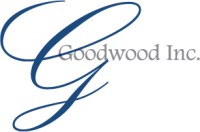Re-think bonds to help retirees facing lower returns and higher risk.
Canada has experienced a dramatic demographic shift; over 20% of the population, the Baby Boomers, have reached retirement age. And, these investors have the same question: Do I have enough savings to generate income for my retirement?
Retired investors often need income from their retirement savings account. Advisors are tasked with recommending solutions and traditionally, they use the stability of the bond market to protect existing capital and generate income. However, the FTSE TMX Canada Universe bond yield has fallen significantly over the past 25 years. The Bank of Canada 10-year bond yield has fallen from 11.5% in 1990 to its current rate of 1.1%. Moreover, during the same period, the duration risk (the sensitivity of a bond price to a change in interest rate) has risen steadily. The result: Baby Boomers are generating far less income with far more risk. This is the interest rate challenge facing advisors today.
Canada’s economy is expected to generate moderate growth. Unlike other central banks, the Bank of Canada has never operated at a sub-zero interest rate. To boost the GDP growth rate, federal and provincial governments have stated they’ll provide fiscal stimulus (increasing the rate of growth of public debt) through increased spending, largely targeting infrastructure. However, too much fiscal stimulus may result in the crowding-out effect, which is when public investment replaces private spending instead of augmenting it. Too much stimulus puts upward pressure on interest rates. These are difficult times for retired people looking for income.
In the event rates do rise appreciably, the good news for Baby Boomers would be more opportunities to generate increased amounts of income. The bad news in that scenario would be the drop in the value of currently held income-producing instruments (i.e., bonds, preferred shares, etc.) as interest rates rise (this occurs as new bonds will be issued with higher coupons making the older bonds less attractive unless their prices adjust). This can be catastrophic for Baby Boomers, as a 1% rise in interest rates could result in the iShares DEX Universe Bond ETF declining 7.45%. A 2% rise could cause a 13.82% capital loss. But, importantly, not all bonds have the same sensitivity to interest rates. Generally speaking, the longer the bond’s maturity, the more it’s affected by changing rates. So, a 10-year bond will usually lose more of its value than the two-year note, as the 10-year bond has more duration risk. Also, the lower a bond’s coupon rate, the more sensitive the bond’s price is to change in interest rates – so lower-coupon government bonds have more duration risk. The solution to the interest rate challenge is investing in attractive, short-duration bonds.
The above scenario highlights why advisors should reallocate client capital from riskier, long-dated government bond funds or ETFs to more defensive, shorter maturity, corporate bond portfolios. Holding shorter-term corporate bonds until maturity is one strategy to reduce duration risk – the investor continues to earn or accrue interest at the expected rate. Another advantage of corporate bonds is they generally carry a higher coupon yield than their government-issued counterparts. This not only results in a lower duration risk, but generates higher cash flow streams for Baby Boomers.
To further reduce risk, advisors can allocate capital to strategies that buy investment grade or high yield bonds and hedge rising interest rate risk by shorting treasury bonds. This strategy is known as “capturing the spread” and results in a yield in excess of floating rate maturities. The credit term premium is the spread between treasury and non-treasury securities. This is a compelling source of additional yield and also helps to protect investors from rising rates.
Advisors should look at the interest rate challenge as an interest rate opportunity. Advisors should always be looking for platforms to showcase their value propositions to clients. Understanding the yield curve and corporate spread markets, and effectively navigating the risks by investing in a properly hedged fixed-income product, is one way of differentiating your business and protecting your client’s capital.
Curt Cumming is president of Goodwood, a Toronto-based investment management firm.
